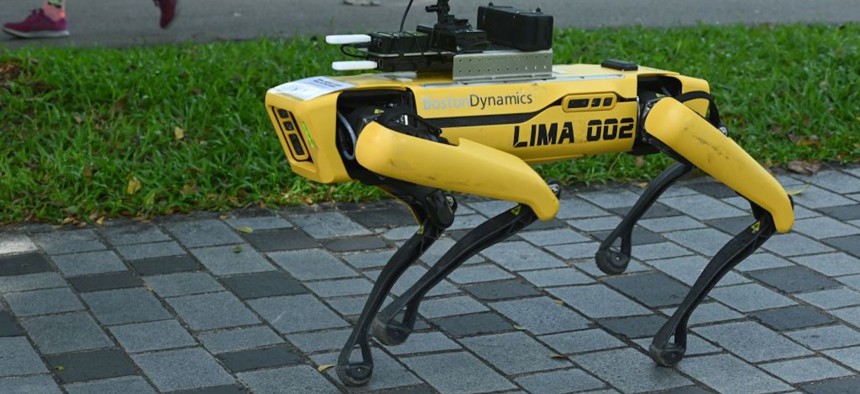Police tech requires better trained officers, more cybersecurity

Photo by ROSLAN RAHMAN/AFP via Getty Images
State governments should also build in more oversight around data collection and privacy, according to researchers at the Information Technology and Innovation Foundation.
Police departments should better train their officers on how to use new technologies like artificial intelligence, robotics, biometrics and surveillance systems and have clearer rules on how and when they can be used, a new report says.
In addition to more robust training, law enforcement agencies should also implement adequate oversight of their officers’ use of new technologies, including using audit logs that could detect misuse or abuse, according to a Jan. 9 report from the Information Technology and Innovation Foundation. Researchers also said police departments should implement rules that officers can only use technology as it was intended by developers.
Because of the sensitive nature of police work, data must be secured, and systems should be regularly updated. Additionally, cyber hygiene training should be required for all officers, the report said, calling for additional training for those that “directly interface” with police technology.
ITIF also urged state governments to play a greater role in oversight of new technologies’ use by law enforcement, including by regulating how much data police can collect, and setting limits on how long it can be retained. The report also urged lawmakers to enact transparency requirements for police departments that provide insight into how data is collected, stored and protected.
The report comes as police departments are increasingly turning to new technologies to help them fight crime and investigate incidents. ITIF said new technologies can help departments “do their jobs more safely, efficiently, and effectively,” citing the use of AI, machine learning, robotics, biometrics, sensors, cameras, virtual reality and other technologies that can help keep officers safe, streamline processes, improve training and maintain public oversight and accountability. However the technology is often expensive, the report said, and adoption has been slow for the most part.
Other challenges to more widespread implementation have been concerns raised by privacy and civil rights advocates, who argue that technologies like facial recognition and surveillance can be abused, misused or biased against certain communities.
One company looking to use new technology to help law enforcement is Boston Dynamics, which is pushing its Spot four-legged robot to explore areas and situations, gather situational awareness or carry out tasks like identifying hazmat incidents that may not be safe for human officers. At an ITIF event coinciding with the report’s launch, Brendan Schulman, vice president of policy and government relations at Boston Dynamics, said Spot’s “athleticism” along with its AI capabilities mean it can open doors unassisted and carry out other autonomous tasks that officers can take advantage of in potentially difficult situations.
Schulman acknowledged the concern that some have about the use of technology like robots in law enforcement, but he said it is too often “dystopian skepticism” that has been overly influenced by science fiction. Schulman said Boston Dynamics and its customers understand the ethical issues the technology faces and want to ensure they are addressed.
“We do have our own policies and a very strong ethical position, that our product cannot be weaponized, can be used to harm or intimidate a person or an animal,” he said. “[Customers] all get it. They understand that in this era, with a lot of misunderstandings and misconceptions about robots, the last thing they want to do is have the robot in a position to hurt someone or even perceived to be designed to hurt someone.”
Schulman compared the adoption of new law enforcement robots to drones, which he said government agencies were initially skeptical about but then quick to adopt as they learned about their capabilities. Similarly, the ITIF report noted that there are “real benefits” related to safety, efficiency and cost savings from new technologies but said their procurement and use must be regulated to “empower law enforcement to explore new ways of doing their jobs more effectively while minimizing potential risks.”






